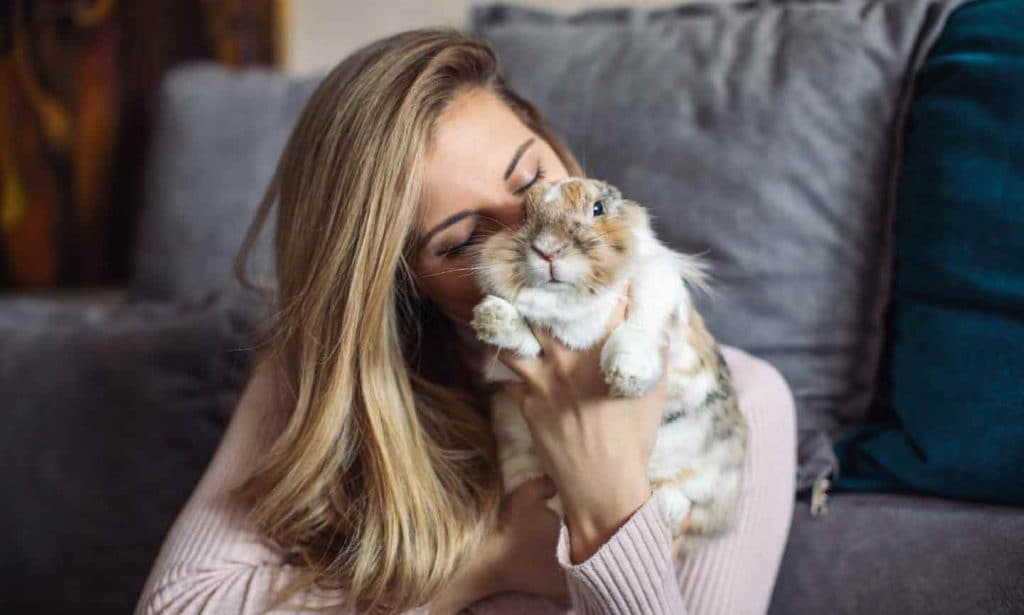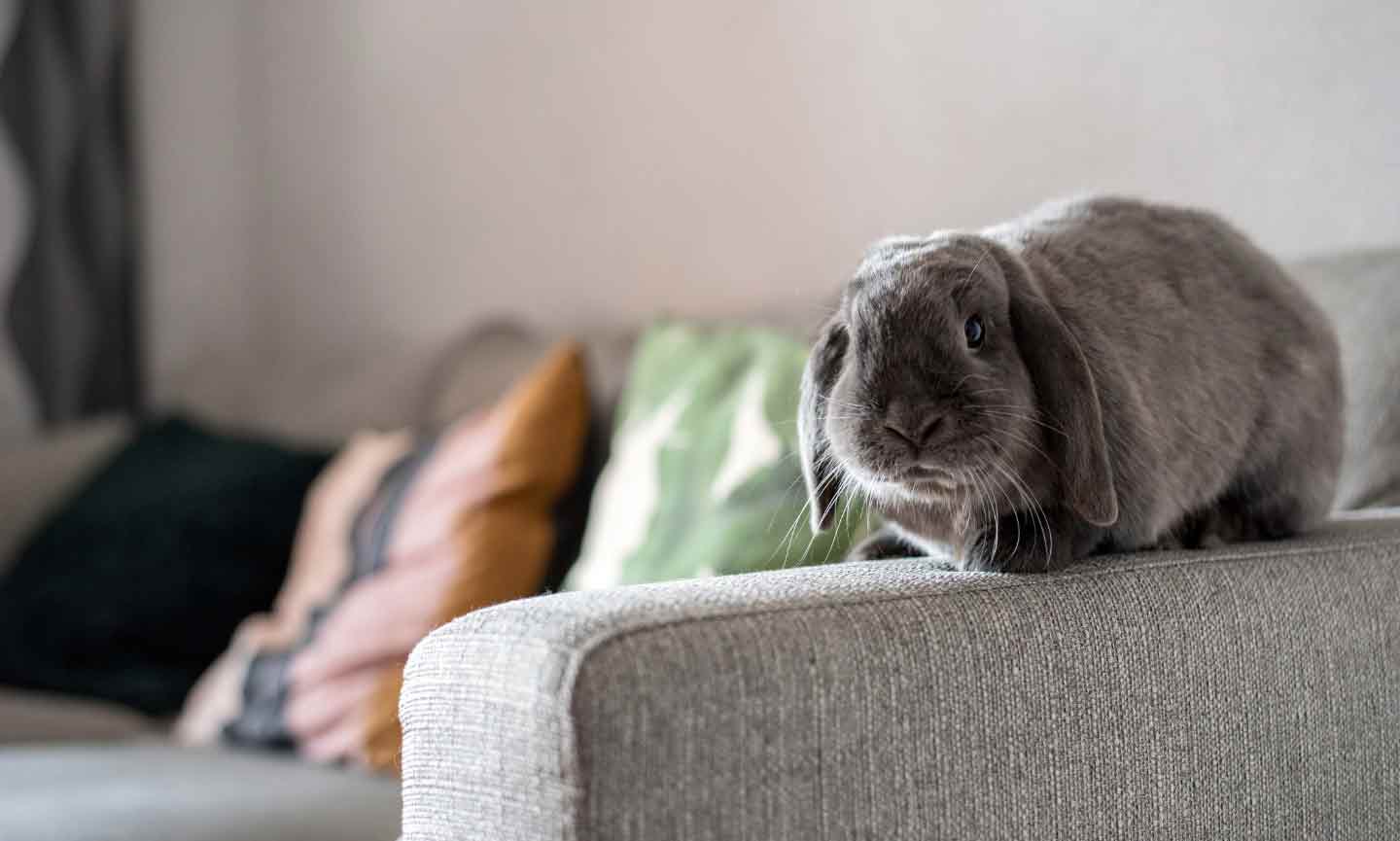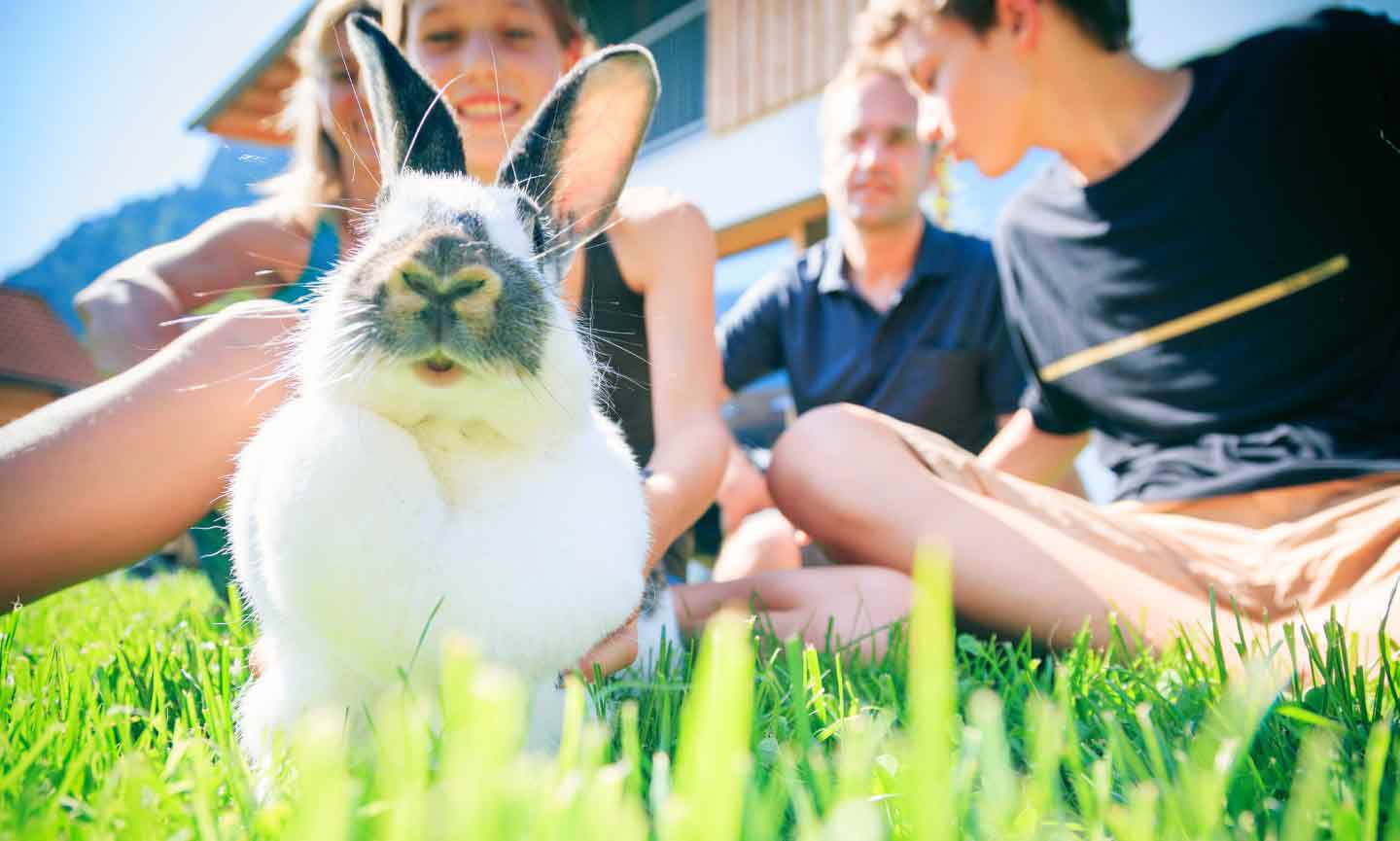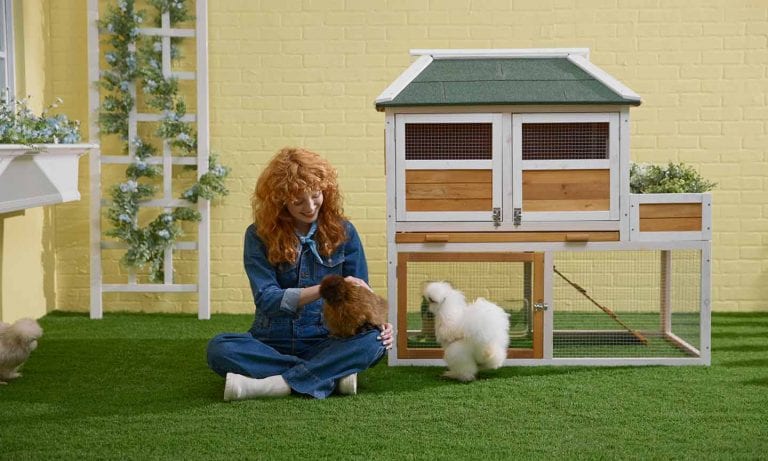ACan rabbits be indoor pets, just like dogs and cats? Yes! Rabbits can live happily indoors—and in fact, having a house rabbit has many benefits, not just for your pet, but for you, too. To happily coexist with your home-based bunny, there are a few things you’ll need (and need to know). We talked to bunny experts to bring you this guide to keeping rabbits indoors.
In This Guide
The Benefits of Indoor Rabbits
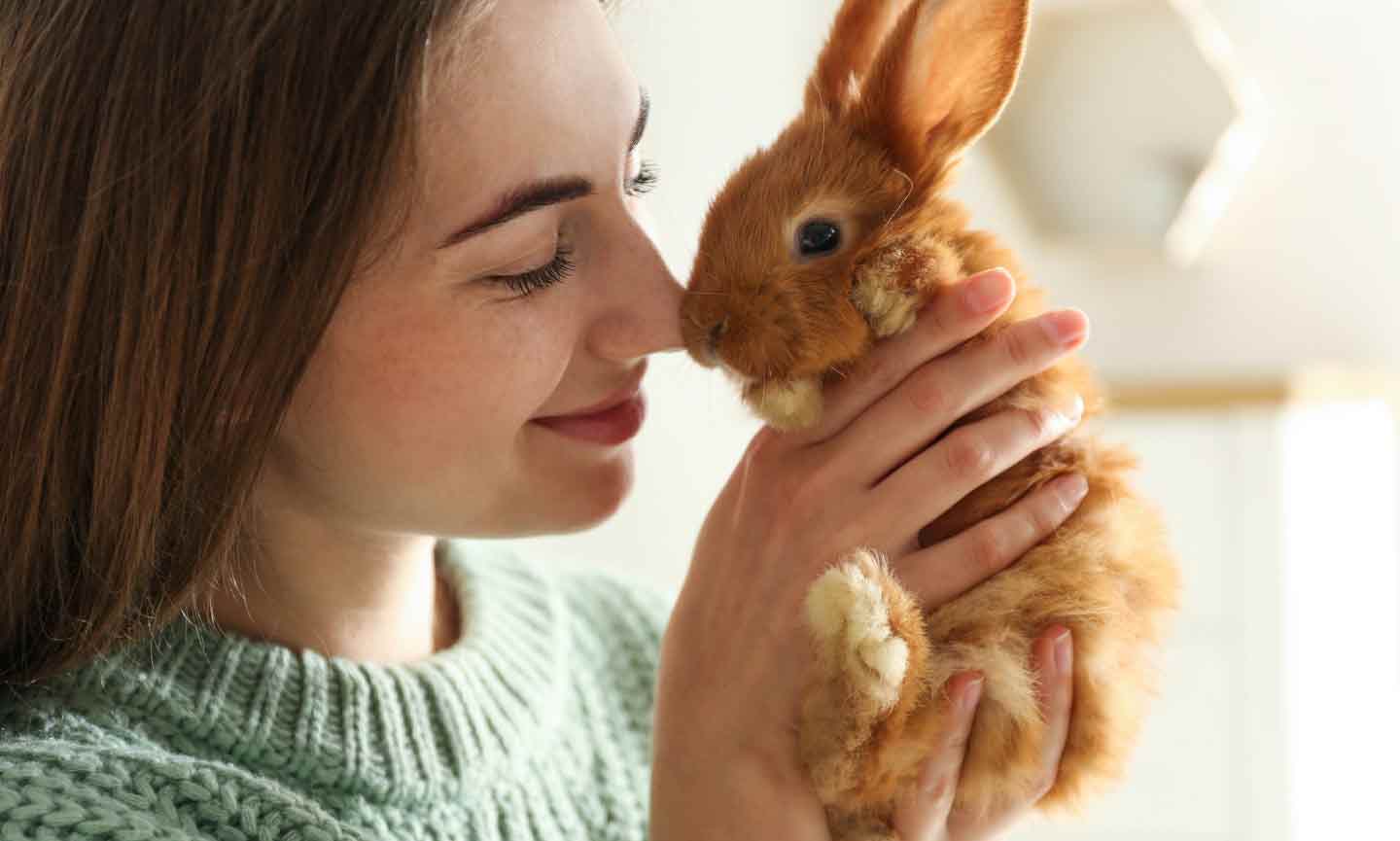
- It keeps them safe from outdoor threats, such as predators and inclement weather.
- It lets you spend more time with them, which can help you learn what their normal behaviors are, and recognize symptoms of illness or injury, such as loss of appetite, lethargy, skin growths or wounds. Rabbits are prey animals, so their instinct is to hide pain and illness—but that’s harder to do if you’re together more often.
1A Bunny Burrow
Rabbits are intelligent and naturally curious, so you’ll want to provide them with their own personal rabbit habitat rather than giving them free access to your home. This prevents them from chewing on your things—including items that may harm them, like electrical wires, Dr. Malensek says.
Create a safe, cozy bunny burrow for them with plenty of room to stretch, sleep and move around. Your burrow should also be able to house a litter box. Some pet parents reserve a room just for their rabbits, but if you don’t have that kind of space, consider a spacious indoor rabbit cage. Look for one with flat flooring, not exposed wire flooring, which can cause foot pain, deformities and infections, Dr. Malensek says.
Make your rabbit habitat even more comfy with newspaper or commercial bedding made just for them. Bunnies love to dig and bury themselves under bedding and will even nibble on it to reduce stress or boredom.
2Access to Hay
Along with fresh water, fresh veggies and a nutritious pelleted diet, house rabbits need plenty of hay to support digestive health and keep their teeth trim. Timothy hay is a popular choice, but you can opt for other varieties like alfalfa, too. Place it in their habitat in an area that’s easy for them to access.
3A Place to Potty
Rabbits can be trained to use the litter box (more on that below), but be aware rabbit litter is different from cat litter. In fact, many commercial litters, such as clay or softwood litters, can make your house rabbit sick.
hoose a rabbit litter that’s paper-based or made with other rabbit-friendly materials. Oxbow Bene Terra Eco-Straw pelleted wheat straw small animal litter, for example, is made from compressed high-fiber wheat straw.
Another option is to line the litter tray with newspaper and top with hay; just keep in mind you’ll need to change the hay often (because your rabbit will eat the hay).
Rabbits tend to gravitate toward corners in their indoor rabbit cages when they go to the bathroom, so when you’re choosing a litter box, you may want to opt for one made especially for corners, like the Kaytee Hi-Corner small animal litter pan.
4Exercise and Enrichment
Just like any other pet, without proper exercise and enrichment, bunnies can get bored—which can lead to destructive chewing and digging as well as obesity and other health issues.
One way to provide your rabbit with exercise and enrichment while keeping them safe is with a play pen. While your bunny’s burrow is a cozy space for them to call home, their playpen should offer more room to stretch their legs, and could even be used outdoors so they can get some fresh air. (More on that later.)
Qualities to look for in your rabbit’s playpen include:
- Space: Look for a pen that’s large enough to let your bunny run and jump around
- Security: Make sure your rabbit can’t get out and get lost or interact with something dangerous
- Flooring: Some playpens come with play mats to protect your pet’s feet (and your floors)
Be sure there are plenty of rabbit toys to shake, throw and chew on in the pen to help keep your indoor rabbit active.
That’s where the playpen mentioned above comes in. Laurie Hess, a professional services veterinarian for special species for Chewy, has worked with rabbits for 30 years. She recommends ensuring your rabbit is safe from items in the home—even wooden furniture legs could be a target, so the best way to bunny-proof your home is to keep them in a pen. “Give them a confined space so that they can’t get into trouble,” she says.
If you do decide to let your bunny roam around your home, exercise extreme caution and monitor them at all times. Rabbits are oral creatures—much like toddlers—and everything goes in their mouths. “You’d be surprised what bunnies can chew on,” Hess says. “You never think they’re going to chew on the baseboard or linoleum on the floor. If given the chance, they can even chew on your kitchen floor tile.”
“Rabbit owners sometimes think that you just put them in the grass,” says Hess, “but you don't really want to put them on the grass because there are all kinds of stuff in the grass, and they're going to eat it.”
That doesn’t mean that your bunny can’t play outside under the right circumstances. Just keep a few things in mind:
- Don’t leave your bunny alone: Predators abound in the outdoors. Hawks can very easily swoop in. Keep your eyes on your rabbit at all times.
- They get overheated easily: Ideal temperatures for bunnies are 60-75 degrees Fahrenheit. With the right breeze and adequate shade, rabbits can stay outside for a few hours while supervised.
- Keep them in a playpen or on untreated sod: Your backyard isn’t as bunny friendly as you might think. Parasites, fungus and insects thrive on grass, and bunnies will eat that grass if given the chance. And even if you aren’t treating your lawn with fertilizers or pesticides that can harm your rabbit, you may have runoff from your neighbor’s lawn.
- Keep food and water bowls and shade easily accessible to them: A great source for shade is a hide box or hutch—somewhere they can go to get out of direct sunlight or away from a threat.
Litter Training Your Rabbit
We’ve got a full guide to litter training your rabbit, but here are a few top tips:
- When you see your rabbit start to pee or poop, put them into the litter box
- Give them a treat after they eliminate in the litter box
- Let them mark the litterbox area so they know it is their smell, and leave it there for a while so that they are reminded that this is where they pee and poop.
With a little preparation, you and your rabbit can live together comfortably and happily indoors. Have you noticed your rabbit doing funny little jumps? It’s called a binky, and we’ve got the full scoop on why your bunny does it.
Christine Borges contributed to this article.
More Rabbit Tips
Share:
